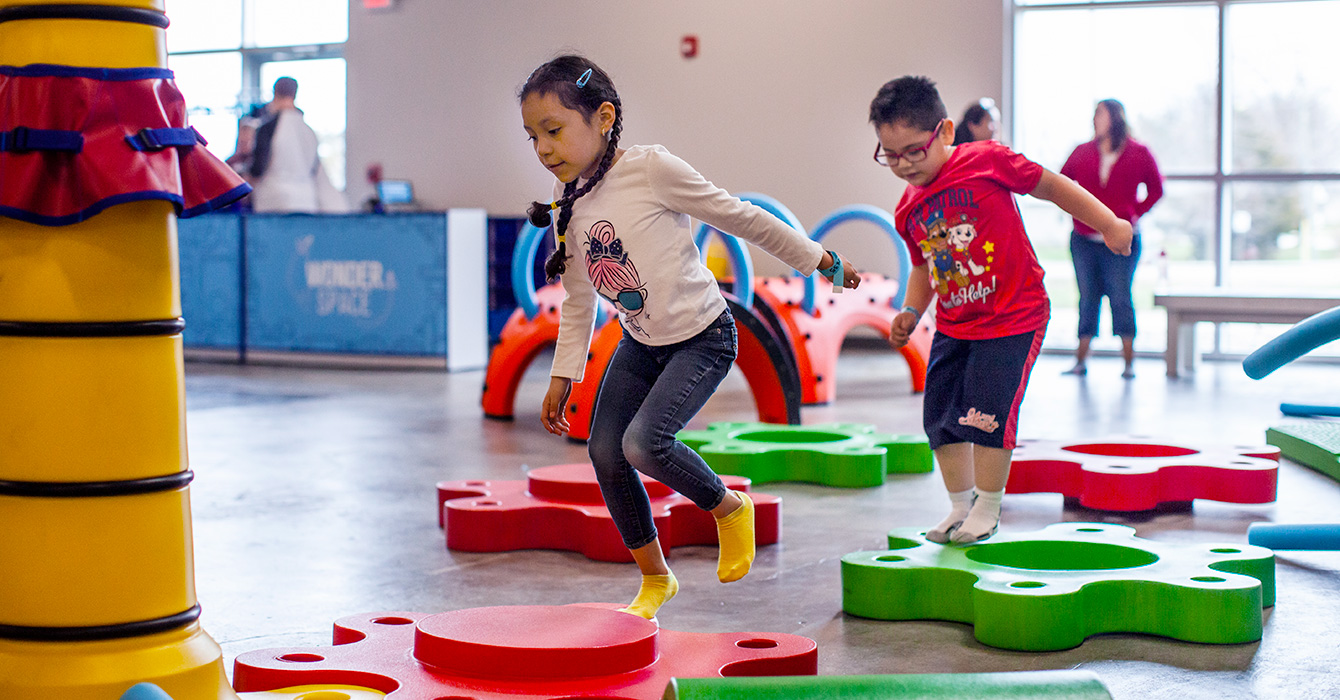As the hymn finishes, my 2-year-old daughter looks up from her foam-block castle and loudly declares, “Amen.”
She’s in our Pray Ground, an area built into our sanctuary where children worship through play, absorbing the message in their own way. Hearing the end of a song, she knows the appropriate response.
The Pray Ground is an explosion of Play-Doh and markers and sheets of paper. There are clay birds’ nests and simple coloring sheets of sparrows and bluebirds. On the floor is a quilt covered with board books and blocks.
I’m preaching from Psalm 84: “Even the sparrow finds a home, and the swallow a nest for herself, where she may lay her young, at your altars, O Lord of hosts” (Psalm 84:3 NRSV).
Our Pray Ground reminds me of this psalm, of sparrows who make nests for their little ones in God’s holy place, a safe place in the sanctuary of God’s spirit for these beloved to be raised.
The idea for the Pray Ground originated with Andrea Roske-Metcalfe, the associate pastor of Grace Lutheran Church in Apple Valley, Minnesota. She began to think about the physical space given to children in the sanctuary when she visited another church. There the back three pews were marked with a placard that said “For families with young children.”
“It made me mad,” she told me. “It communicated to me that this is where my kids and I belonged -- in the back -- because then we wouldn’t be a distraction to everyone else up in front. And I thought that was awful. Also, little kids can’t see anything from the back, so it didn’t make logistical sense.”
Andrea began to talk with her own congregation about where children are during Sunday morning worship. She was clear that if they were going to establish a welcoming space for children, it needed to be up front. The first step for children participating in worship is seeing it, she told them.
It has worked. The children at Grace are more engaged in what’s happening up front on Sunday mornings. Parents sing hymns and listen to the sermon while their children engage in their own way. Older adults appreciate seeing children and young families in worship, celebrating, praying and singing alongside the whole body of Christ.
In the churches where I have served, I’ve seen a shift toward making spaces like this for little ones. Congregations are creating spaces for cross-generational worship instead of banishing the smallest worshippers to the nursery before the prelude.
It’s not always an easy shift. Some folks worry about the mess and distraction and its impact on adult worshippers. Resistance also comes from the opposite direction -- people worried that the children will be distracted by the play and won’t engage the liturgy.
Each week at a church where I served as a children’s minister, we offered children a “pew project,” a hands-on craft tied to the Bible passage that Sunday. Children would bring their projects back as art for our sanctuary or to decorate the altar. Or they’d take them home to help their families relive the Scripture throughout the week.
On the Sundays I was not preaching or leading worship, I tried to sit with different children in our congregation. One day I was sitting next to Emily, who was working intently on a pew project, fashioning a golden calf out of pieces of construction paper and glue.
We were midway through the sermon when Emily looked up at me. The preacher was speaking about the challenge of following Jesus, how Jesus often had difficult words to say to the scribes and Pharisees, words that were not always friendly.
Cocking her head to the side, Emily said, “I do think of Jesus as my friend, not as someone who says hard things.” Then she went back to her project.
Like my 2-year-old daughter, Emily was absorbing the message in her own way. Her mind was piecing together the sermon even as she pieced together the pew project.
What we are learning about children is that they process their world through play. Play is the structure within which children work out life’s questions and everyday events, including the rituals and experiences encountered on Sundays.
When we open up spaces for play in worship, we are inviting children to worship as they are, not as we wish them to be. And we can expect that they will grow into worship as they play and pray alongside adults.
In Psalm 84, birds are flying about in the temple, making their nests in the very center of God’s life. In our church, I see that lovingly re-created as God’s altars become a place for little ones to worship and play.













